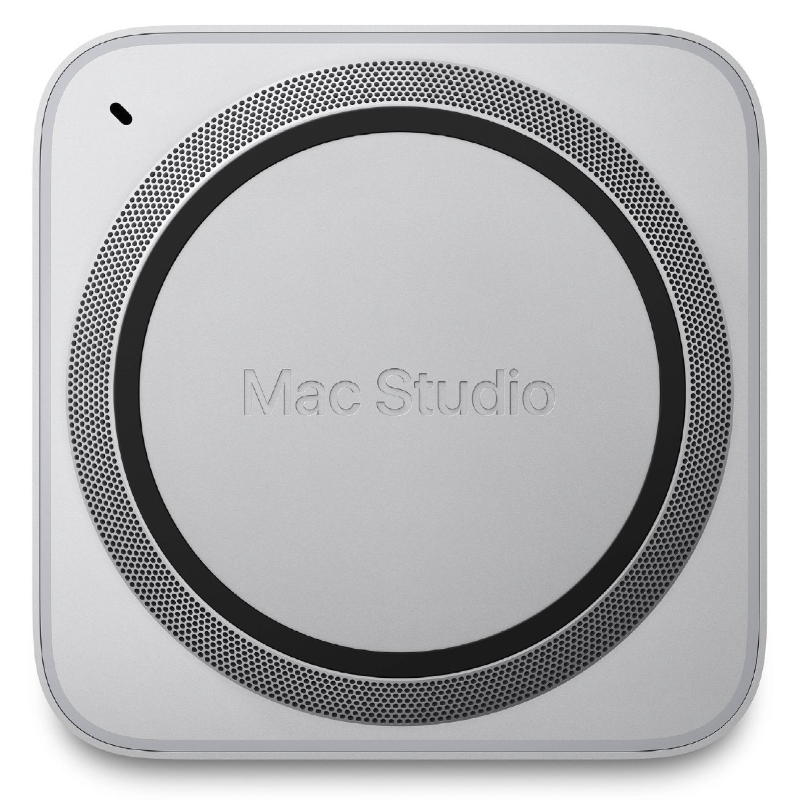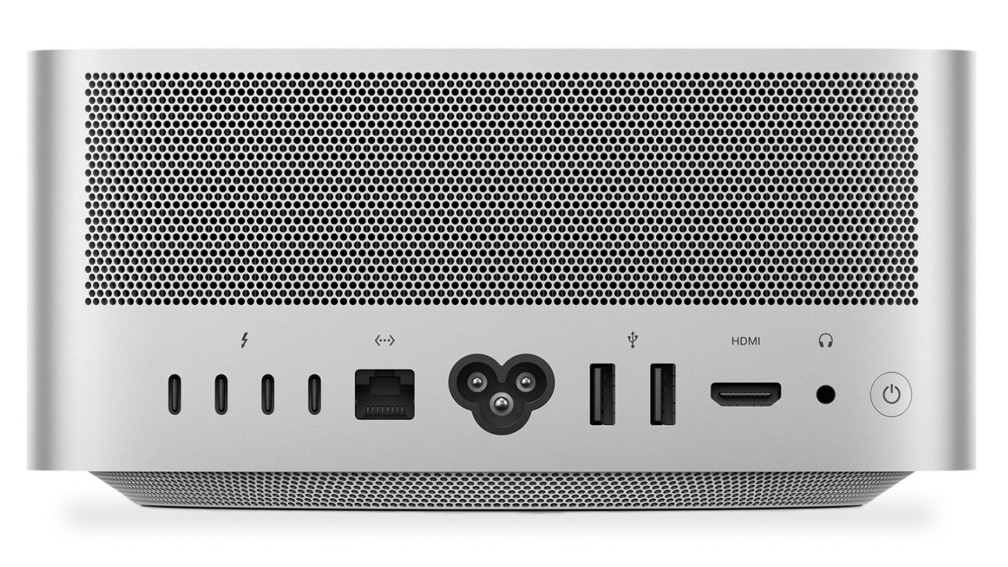Powerful, Compact Computer
Review by Steve Baczewski
Reminiscent of the Apple 2000 G4 Cube design, the Mac Studio M1 Ultra is the most powerful Mac ever built. Apple achieved this by fusing two newly designed M1 chips, and the software sees it as a single processor. Its small footprint is deceiving.
The Studio M1 Ultra I reviewed came with a 20 core CPU, 48 core GPU, 32 core Neural engine, 64 GB of unified memory, and an 8 TB SSD. It cost $6,199. The base Studio M1 Ultra starts at $3,999 and tops out at $7,999, which includes a 64 core GPU, 128 GB of unified memory, and 8 TB of SSD. Unlike a Mac Pro, with its expansion slots, the Studio M1 Ultra isn’t upgradable. It’s a locked box; so thoughtful configuration on purchase is key. One workaround is the purchase of external SSD drives.
It ships with OS Monterey 12.4, which includes Universal Control that allows the Studio M1 Ultra to access and use an iPad’s screen as a display, increasing the practical nature of the Studio’s mobility. I used Apple’s migration utility and transferred most of my data from my 2013 Mac Pro (a.k.a. the “gray trash can”) to the 2022 M1 Ultra (except for about 400 images from my Lightroom catalog that didn’t make the trip).
To experience the full power of the M1 Ultra your software needs to be optimized for the M1 chip; otherwise programs run emulated by Rosetta 2.0. Happily, both Photoshop and Lightroom are now optimized, and the speed of the M1 Ultra was immediately apparent when I processed 200-MB, 16-bit, Fuji GFX100S files through Topaz’s M1-optimized DeNoise AI and Sharpen AI filters. Although anyone will benefit from its power, the intentional market for the M1 Ultra is photographers, filmmakers, and graphic designers. (I’m not clear if this computer is for gamers.)
The Studio weighs a solid 7.9 lbs. and is small enough to be portable. Like the Mac mini design, it has a 7.7″ square base, but at 3.7″, it’s 2.3″ taller. It has a seamless, brushed- aluminum casing that uses a copper heat sink inside, efficiently designed to keep the Mac Studio M1 Ultra cool and quiet. This Mac has two fans and pulls air in through its tapered bottom and pushes it out through the 2,000-plus vent holes on the rear.

Under the ventilator holes in a line across the bottom is a comprehensive set of connectivity ports including: four Thunderbolt 4 ports, a 10 Gb Ethernet port, two USB-A ports for all those old devices (thank-you, Apple), one HDMI 2.0 port, and a 3.5mm headphone jack. On the front are two more Thunderbolt 4 ports and an SDXC memory slot that supports all the latest cards. One annoyance is the placement of the smallish power button in the rear that’s easily missed; it would be better suited if placed up front.
I used my 2021 M1 Max MacBook Pro as a basis for performance comparisons. It has a 10 core CPU and a 32 Core GPU very similar to the Apple Studio M1 Max’s processing power.
I imported into Lightroom 300, 16-bit uncompressed, Fuji GFX 100S RAW files including smart previews. Each file is 200 MB. It took 6 min 52 sec. on the M1 Max MacBook and 4 minutes 20 secs. on the Studio M1 Ultra. Importing the same files to my 2020 Mac mini took 26 minutes!
The boost to Lightroom and Photoshop performance was immediately apparent, processing large files in otherwise process-demanding tasks, such as merging HDR
panoramas. The Studio M1 Ultra performed smoothly without a single hitch and is definitely the best experience I’ve had with a computer. By the way, I almost forgot to mention that it can run up to four displays simultaneously via USB-C, plus another display via the HDMI port.
As I’m writing this, Apple announced several new computers using a new M2 chip. Seems like they’re stepping on their own feet, and might make consumers pause to strategize whether to purchase the Apple Mac Studio M1 Ultra or wait for what will inevitably be the next powerhouse graphics machine. ■






